 W
WThe Adamantina Formation is a geological formation in the Bauru Basin of western São Paulo state, in southeastern Brazil.
 W
WThe Alcobaça Formation, previously known as the Guimarota Formation, is a geological formation in Portugal. It dates back to the Oxfordian stage of the Late Jurassic. It is an important source of information on the diversity of Late Jurassic mammals. Many of the fossils were collected from the now disused and flooded Camadas de Guimarota coal mine.
 W
WThe Allenby formation is a sedimentary rock formation deposited during the early to early Middle Eocene. It consists of conglomerates, sandstones with interbedded with shales and coal. The coal seams contain an abundance of insect, fish and plant fossils, known from the shales since 1877 but best known from the Princeton Chert.
 W
WThe Argiles d'lignite du Soissonnais is a geologic formation in the Oise department of northern France. The formation has provided fossil mammals, reptiles and fish as well as arthropods in the amber of the formation. The Argiles d'lignite du Soissonnais dates back to the Ypresian stage of the Eocene period.
 W
WThe Bagå Formation is a geological formation dating to around 199 to 170 million years ago, in the Early and Late Jurassic. It is located on the island of Bornholm, Denmark.
 W
WThe Bakhar Formation is a geological formation in Mongolia whose strata date back to the Aalenian to Bathonian stages of the Middle Jurassic, comprising claystones deposited in a lacustrine environment.
 W
WThe Beipiao Formation contains coal measures dated to the Early Jurassic period. Its mainly located in Xinglong County, Hebei Province
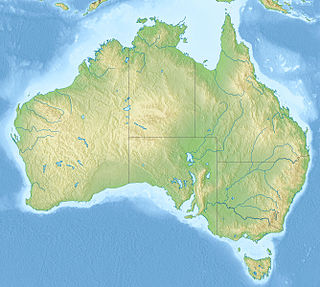 W
WThe Blackstone Formation is a geologic formation of the Ipswich Coal Measures Group in southeastern Queensland, Australia, dating to the Carnian to Norian stages of the Late Triassic. The shales, siltstones, coal and tuffs were deposited in a lacustrine environment. The Blackstone Formation contains the Denmark Hill Insect Bed.
 W
WThe Borucice Formation, also known in older literature as the Borucice Series, is a Jurassic geologic formation that extends to nearly whole Poland. This formation represents the last sequence of the lower Jurassic in Poland, recovering the depositional Sequences IX and X, and may even recover lowermost parts of the first Middle Jurassic sequence. It represents mostly a series of Alluvial depositional systems with subordinate intervals of deltaic deposits. Dinosaur Tracks are among the fossils that have been recovered from the formation. Most of the sediments of the Polish realm come from deltaic, fluvial and marine deposits. Its main equivalents are the Jurensismergel Formation of Germany, upper part of the Rya Formation and the Uppermost Sorthat Formation (Bornholm). There are also coeval abandoned informal units in Poland: Upper Lisiec beds, or the Kamień Beds.
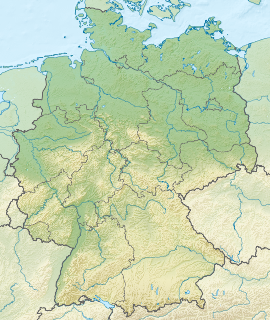 W
WThe Bückeberg Formation is a geologic formation and Lagerstätte in Germany. It preserves fossils dating back to the Berriasian of the Cretaceous period. The Bückeberg Formation has previously been considered to constitute the "German Wealden" in reference to its similarity to the Wealden Group in the United Kingdom. More recently it has been considered a group, containing the Isterberg and Deister Formations. The plesiosaur Brancasaurus, and an indeterminate ankylosaur referred to Hylaeosaurus are known from the formation.
 W
WThe Bungil Formation is a geological formation in Australia whose strata date back to the Early Cretaceous. Dinosaur remains are among the fossils that have been recovered from the formation.
 W
WThe Caballos Formation is a geological formation of the Upper Magdalena Valley (VSM), Caguán-Putumayo Basin, Central and Eastern Ranges of the Colombian Andes. The sandstone and shale formation dates to the Middle Cretaceous period; Aptian to Albian epochs and has a maximum thickness of 411 metres (1,348 ft).
 W
WCaleta Chonos Formation is a geological formation of Oligocene age located around Chacao Channel in southern Chile. The formation overlies Bahía Mansa Metamorphic Complex and is overlain by the Ancud Volcanic Complex. It crops out in northwestern Chiloé Island in the isthmus of Lacuy Peninsula.
 W
WCaleta Godoy Formation is a geological formation whose main outcrops lie around Chacao Channel in southern Chile. The formation overlies Bahía Mansa Metamorphic Complex and Santo Domingo Formation.
 W
WThe Cattamarra Coal Measures is an Early Jurassic geological unit in Western Australia.
 W
WThe Cerrejón Formation is a geologic formation in Colombia dating back to the Middle-Late Paleocene. It is found in the El Cerrejón sub-basin of the Cesar-Ranchería Basin of La Guajira and Cesar. The formation consists of bituminous coal fields that are an important economic resource. Coal from the Cerrejón Formation is mined extensively from the Cerrejón open-pit coal mine, one of the largest in the world. The formation also bears fossils that are the earliest record of Neotropical rainforests.
 W
WThe Coalmont Formation (Tmc) is a geologic formation that outcrops in the North Park intermountaine basin in Colorado. It contains fossil plants and coal layers dating back to the Paleogene period.
 W
WThe Coalspur Formation is an Upper Cretaceous to lower Palaeocene stratigraphic unit of the Western Canada Sedimentary Basin in the foothills of southwestern Alberta. Its deposition spanned the time interval from latest Cretaceous (Maastrichtian) to early Palaeocene, and it includes sediments that were deposited before, during, and after the Cretaceous-Paleogene (K-Pg) extinction event. It includes the economically important coal deposits of the Coalspur Coal Zone, as well as nonmarine plant and animal fossils.
 W
WThe Culebra Formation (Tcb) is a geologic formation in Panama. It preserves fossils dating back to the Miocene period; Early Miocene epoch, Aquitanian to Burdigalian stages. Fossils of Culebrasuchus have been found in and named after the formation. The thickness of the formation is at least 250 metres (820 ft) thick, and the age has been estimated as from 23 to 19 Ma.
 W
WThe Djupadal Formation is a geologic formation in Skåne County, southern Sweden. It is Early in age. It recovers at various locations throughout Central Skane, know by the discovery of basalt tuff layers, including Sandåkra, Korsaröd and Djupadal. An original analisis of the location of Korsaröd led to a Toarcian-Aalenian age. Aspect that was recovered on various papers on the 80-90s. But was dismissed on 2016, when a series of Palynogical samples recovered a Late Pliensbachian and probably Lower Toarcian age for the Korsaröd Outcrop. The formation was deposited in the Central Skane region, linked to the late early Jurassic Volcanism. The Korsaröd member includes a volcanic-derived Lagerstatten with exceptional fern finds.
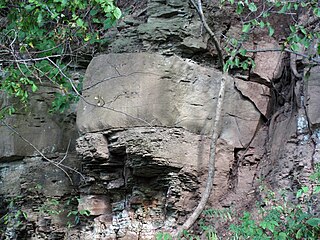 W
WThe Permian Dunkard Group (Pd) is an area of rock, Early Permian in age, in the south of Ohio, southwestern Pennsylvania, West Virginia and the hilltops of the Georges Creek Basin of Maryland. In Ohio, it is found primarily in Washington County. It is notable for being one of the few areas of Permian sediment east of the Mississippi River. In addition, it is the youngest surface rock in the state of Ohio.
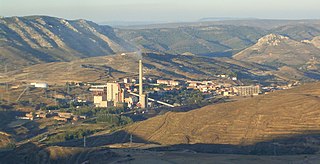 W
WThe Escucha Formation is a geological formation in La Rioja and Teruel provinces of northeastern Spain whose strata date back to the late Aptian to middle Albian stages of the Early Cretaceous. Dinosaur remains are among the fossils that have been recovered from the formation.
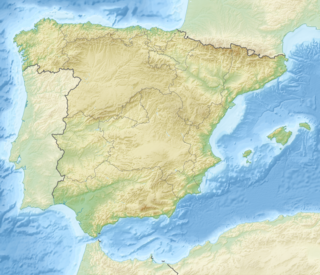 W
WThe Fazaouro Formation is a fluvial-lacustrine sedimentary fill in the northeast of the Province of Lugo, at the site of the prehistoric depositional ranges of a supposed sedimentary glaciation. The area consists of a valley and ridge topography, with a series of small mounts at roughly ninety degrees to each other. The Fazaouro Formation develops through the extinct and extant current basins that fill the valley of Valadouro & Foz.
 W
WThe Fort Union Formation is a geologic unit containing sandstones, shales, and coal beds in Wyoming, Montana, and parts of adjacent states. In the Powder River Basin, it contains important economic deposits of coal, uranium, and coalbed methane.
 W
WThe Fruitland Formation is a geologic formation found in the San Juan Basin in the states of New Mexico and Colorado, in the United States of America. It contains fossils dating it to the Campanian age of the late Cretaceous.
 W
WThe Golden Valley Formation is a stratigraphic unit of Late Paleocene to Early Eocene age in the Williston Basin of North Dakota. It is present in western North Dakota and was named for the city of Golden Valley by W.E. Benson and W.M. Laird in 1947. It preserves significant assemblages of fossil plants and vertebrates, as well as mollusk and insect fossils.
 W
WThe Guaduas Formation (Spanish: Formación Guaduas, K2P1G, K2E1G, KPgg, KTg, TKg, Ktg) is a geological formation of the Middle Magdalena Basin and the Altiplano Cundiboyacense, Eastern Ranges of the Colombian Andes. The predominantly shale with coalbed formation dates to the Late Cretaceous and Paleogene periods; Maastrichtian-Paleocene epochs, and has a maximum thickness of 1,090 metres (3,580 ft). Fossils of Coussapoa camargoi, Ficus andrewsi, Berhamniphyllum sp. and Archaeopaliurus boyacensis have been found in coalbeds in Zipaquirá and Tasco, Boyacá.
 W
WThe Haifanggou Formation is a fossil-bearing rock deposit located near Daohugou village of Ningcheng County, in Inner Mongolia, northeastern China.
 W
WThe Höganäs Formation is a Late Triassic to Early Jurassic geologic formation in Skåne, Sweden. Dinosaur remains are among the fossils that have been recovered from the formation, although none have yet been referred to a specific genus.
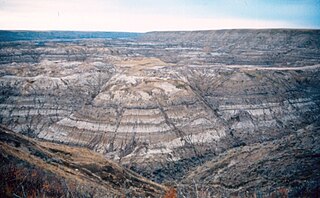 W
WThe Horseshoe Canyon Formation is a stratigraphic unit of the Western Canada Sedimentary Basin in southwestern Alberta. It takes its name from Horseshoe Canyon, an area of badlands near Drumheller.
 W
WThe Huab Formation is an Early Permian geologic formation correlated with the Ecca Group and designated "Ecca" Group, because it does not belong to the Karoo, in the southwestern Kunene Region and northern Erongo Region of northwestern Namibia. The Huab Formation represents the oldest sedimentary unit of the Huab Basin, overlying the basement. The oil shales within the formation were deposited in a shallow lacustrine environment, and the formation marks the transition from terrestrial deposits under glacial climatic circumstances towards a warmer fluvial and marine deltaic environment.
 W
WThe Hutton Sandstone is a geological formation of the Surat Basin in Queensland, Australia. The ferruginous sandstones and coal were deposited in a floodplain environment and dates back to the Bajocian.
 W
WThe Itaboraí Formation is a highly fossiliferous geologic formation and Lagerstätte of the Itaboraí Basin in Rio de Janeiro, southeastern Brazil. The formation reaching a thickness of 100 metres (330 ft) is the defining unit for the Itaboraian South American land mammal age (SALMA), dating to the Early Eocene, approximately 53 to 50 Ma.
 W
WThe Joggins Formation is a geologic formation in Nova Scotia. It preserves fossils dating back to the Carboniferous period, including Hylonomus, the earliest known reptile. In addition to fossils, the Joggins Formation was a valuable source of coal from the 17th century until the mid-20th century.
 W
WThe Kitadani Formation is a unit of Lower Cretaceous sedimentary rock which crops out near the city of Katsuyama in the Fukui Prefecture of Japan, and it is the primary source of Cretaceous-aged non-marine vertebrate fossils in Japan. Dinosaur remains are among the fossils that have been recovered from the formation, but it also preserves a diverse assemblage of plants, invertebrates, and other vertebrates. Most, if not all, of the fossil specimens collected from the Kitadani Formation are reposited at the Fukui Prefectural Dinosaur Museum.
 W
WLebu Group is stratigraphic unit of Arauco Basin in south-central Chile. The group consists of a sequence of four formations, of both marine and nonmarine origin, deposited between the Early Paleocene and Middle Eocene.
 W
WThe Lignites de Soissonais is a geologic formation in the Var, Marne departments of France. It preserves fossils dating back to the Ypresian stage of the Eocene period.
 W
WLoreto Formation is a sedimentary formation of Late Eocene age in the southernmost Magallanes Basin. It overlies the Leña Dura Formation and the contact with an overlying formation is not observed.
 W
WThe Margaret Formation is a geologic formation of the Eureka Sound Group in the Sverdrup Basin in Northwest Territories and Nunavut, Canada. The unit belonging to the Eureka Sound Group which crops out at Ellesmere Island preserves fossils dating back to the Early Eocene period, or Wasatchian in the NALMA classification.
 W
WLa Matilde Formation is a Jurassic geological formation in the Austral Basin of Santa Cruz Province, Patagonia, Argentina. It is dated to the Middle to Late Jurassic. From the Bathonian age to the Kimmeridgian age at the latest.
 W
WThe Mecsek Coal Formation is a Jurassic geologic formation in Hungary. Indeterminate fossil ornithischian tracks have been reported from the formation.
 W
WThe Obernkirchen Sandstein or Obernkirchen Sandstone is a geological unit in Lower Saxony, Germany whose strata date back to the Early Cretaceous. The remains of the dinosaur Stenopelix and numerous dinosaur tracks are known from the unit. The unit is a thin interval within the Bückeberg Formation As its name would suggest the lithology primarily consists of sandstone with thin intercalations of coal. This was deposited in a sandy barrier to lagoonal complex setting. The unit has historically been extensively quarried for its high quality building stone, which has been used as far away as Jakarta.
 W
WThe Ohlsbach Formation is a geologic formation in Germany. It preserves fossils dating back to the Gzhelian stage of the Late Carboniferous period.
 W
WThe Oropouche Formation is a geologic formation in Trinidad and Tobago dating to the Pleistocene. It preserves plant fossils.
 W
WThe Rya Formation is a geologic formation in Skåne County, southern Sweden. It is Early to early Middle Jurassic in age. The Rya Formation comprises siltstones, claystones, sandstones, mudstones and rare coal beds. The formation overlies the Höganäs Formation and is overlain by the Vilhelmsfält and Mariedal Formations.
 W
WThe Sainte-Barbe Clays Formation is a geological formation in Belgium. It is found in localised areas of the northern margin of the Mons Basin, alongside the equivalently aged Hautrage and Baudour Clay Formations. It is Upper Barremian-Lower Aptian in age. It predomiantly consists of laminated clay, with some lignite. It is well known for the "Iguanodon sinkhole" locality near Bernissart where many specimens of Iguanodon bernissartensis were discovered by Louis Dollo in the late 19th century.
 W
WThe Santa Teresa Formation is a geological formation of the western Eastern Ranges of the Colombian Andes, west of the Bituima Fault, and the southern Middle Magdalena Valley. The formation spreads across the western part of Cundinamarca and the northern portion of Tolima. The formation consists of grey claystones intercalated by orange quartz siltstones and sandstones of small to conglomeratic grain size. The thickness at its type section has been measured to be 118 metres (387 ft) and a maximum thickness of 150 metres (490 ft) suggested.
 W
WThe Scollard Formation is an Upper Cretaceous to lower Palaeocene stratigraphic unit of the Western Canada Sedimentary Basin in southwestern Alberta. Its deposition spanned the time interval from latest Cretaceous to early Paleocene, and it includes sediments that were deposited before, during, and after the Cretaceous-Paleogene (K-Pg) extinction event. It is significant for its fossil record, and it includes the economically important coal deposits of the Ardley coal zone.
 W
WThe Soncco Formation is a Late Eocene to Early Oligocene geologic formation in southern Peru. The base of the formation at the contact with the K'ayra Formation is dated using fission track analysis at 43 Ma and the top, the contact with the Punacancha Formation, at 30 Ma. In other places the Tinajani Formation overlies the Soncco Formation. The formation has a thickness of 1,600 metres (5,200 ft).
 W
WThe Tiaojishan Formation is a geological formation in Hebei and Liaoning, People's Republic of China, dating to the middle-late Jurassic period. It is known for its exceptionally preserved fossils, including those of plants, insects and vertebrates. It is made up mainly of pyroclastic rock interspersed with basic volcanic and sedimentary rocks. Previously, the Tiaojishan Formation was grouped together with the underlying Haifanggou Formation as a single "Lanqi Formation." Most researchers now agree that the Daohugou Bed, of formerly controversial dating, is a part of the Tiaojishan formation. The Tiaojishan Formation forms a key part of the Yanliao Biota assemblage.
 W
WThe Walloon Coal Measures are a Late Jurassic geologic subgroup in Queensland, Australia. Deposited within the Surat Basin it is Oxfordian to early Tithonian in age based on lead-uranium dating of tuffites within the unit. The dinosaur Rhoetosaurus is known from the unit.
 W
WThe Wasatch Formation (Tw) is an extensive highly fossiliferous geologic formation stretching across several basins in Idaho, Montana Wyoming, Utah and western Colorado. It preserves fossils dating back to the Early Eocene period. The formation defines the Wasatchian or Lostcabinian, a period of time used within the NALMA classification, but the formation ranges in age from the Clarkforkian to Bridgerian.
 W
WThe Yanan Formation, alternatively spelled the Yan'an Formation is a geological formation in China, it is also alternatively considered a group. The age of the formation is uncertain, with estimates ranging from Toarcian to Bajocian. It is divided up into 5 members, with the designation of Y1 through Y5. Y2, Y3 and Y4 are predominantly dark shales, while Y1 and Y5 are composed of sandstones, coal beds and interbedded mudstones. The depositional environment at the time was when the Ordos Basin formed a large inland lake, surrounded by floodplains. The dark shales have been explored for the potential of producing shale gas. The coal has also been explored for the production of coalbed methane. The formation is also notable for its fossil content, with dinosaur footprints and the remains of the sauropod Lingwulong having been found in the formation.